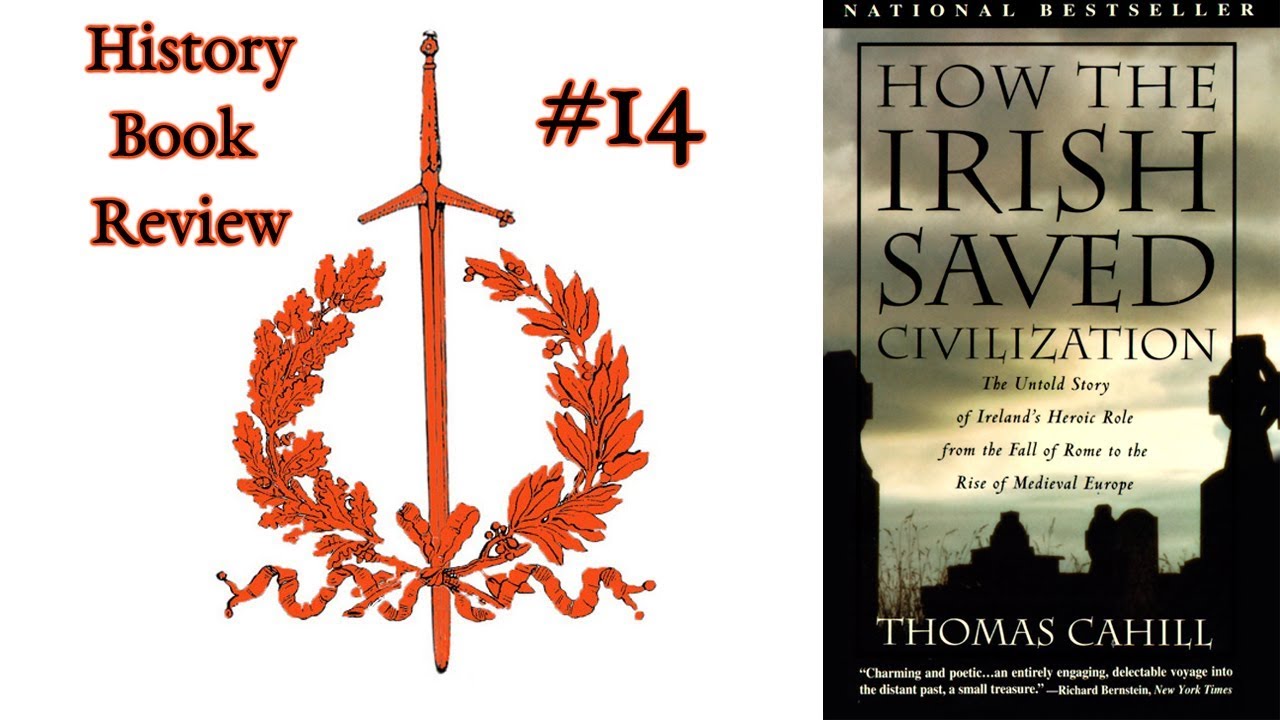The tapestry of history is threaded with countless tales of valor and intellect, but few narratives resonate with as profound clarity as that of “How the Irish Saved Civilization.” This engaging tome unravels a richly woven narrative, elucidating the role of the Irish in preserving the vestiges of Western civilization during the tumultuous eras of the Dark Ages. It serves as more than a historical account; it is an impassioned homage to literacy, culture, and the indomitable spirit of a people.
The title itself serves as an audacious metaphor, invoking images of heroes in verdant fields, armed not with swords but with quills and parchment. It beckons the reader to explore a world where the light of knowledge flickers like a singular candle in the enveloping darkness. When the Roman Empire crumbled, and Europe descended into chaos, the Irish emerged as unsung custodians of wisdom, safeguarding essential texts that would otherwise have been lost to time.
In this thrilling narrative, the author deftly sets the stage for the reader. The backdrop unfolds in the 5th century, a time characterized by disarray and disintegration. Here, the Irish take center stage, transformed into holy recluses and bookish scholars. They became the stewards of ancient texts, meticulously copying manuscripts that chronicled the works of Homer, Virgil, and others. This meticulous labor was not merely an act of preservation; it was an embodiment of a spiritual mission akin to that of modern-day scribes chanting sacred verses.
The book unfurls like a lush, green landscape dotted with monasteries. Each chapter acts as a unique vignette, illustrating the Irish monks and their forays into the world of education. The author poignantly depicts the wet and chilly climates, grounding readers in the somber reality these scholars faced. It was in these remote cloisters that they engaged in the holy act of transcription, sometimes under the threat of Viking marauding bands. Here, every line painstakingly copied was a rebellion against forgetfulness, a defiance against the erosion of culture.
Amidst the somber ecclesiastical struggle, the narrative brims with tales of vibrant interaction—Irish scholars who ventured abroad and encountered the rich intellectual heritage of continental Europe. They became emissaries of learning, rousing the continent from its restless slumber. The author adroitly juxtaposes the internal conflicts of Ireland with the broader European landscape. Like wildflowers springing up in the most desolate of places, the Irish intellect heralded hope and renewal.
As the story unfolds, the figure of Saint Patrick looms large. Often relegated to the status of a mere founder of Christianity in Ireland, the author breathes fresh life into his characterization. Saint Patrick emerges as a luminous figure, akin to a beacon amidst a stormy sea, whose influence transcended mere religious boundaries. His fervor was not just to convert but to cultivate—a vital understanding that culture and education could coalesce to form the bedrock of a thriving society.
Yet, it is not merely the narratives of individual figures that captivate the reader; rather, it is the cultural ethos that emerges. The Irish sages, with their brooding contemplations, fostered a unique style of Christian monasticism that engaged in dialogue with classical traditions. This fusion, rich and complex, resembles a symphony, harmonizing the sacred and the secular, creating a rich legacy of literature and learning. Each painstakingly decorated manuscript was not simply a holy object but a testament to a vibrant philosophical inquiry.
While the tale is undeniably one of triumph, the book does not shy away from the conflicts that marked Ireland’s history. The Viking invasions serve as a contrasting force. These roving marauders, often depicted in broad strokes of villainy, are explored with nuance. They symbolize the existential threats that continuously besieged the Irish cultural fortress. However, rather than succumb to despair, the Irish tenacity engendered a communal identity that ultimately fortified their resolve. The monasteries became bastions of learning, defiant in the face of adversity.
As the narrative marches towards its conclusion, it leaves an indelible mark on the reader’s consciousness. It invites contemplation. The question arises: how does the legacy of the Irish continue to resonate in contemporary contexts? In an era of digital delirium, the meticulous scrolling through ancient texts becomes a poignant reminder of the value placed on literacy and the written word. The echoes of this historical saga reverberate through modern educational endeavors; the lessons gleaned from those tumultuous times still carry weight today.
Ultimately, “How the Irish Saved Civilization” is not merely a retelling of a historical epoch; it is a fervent call to acknowledge the persistence of culture in the face of obliteration. It celebrates the notion that knowledge and creativity can outlive temporal strife, much like an ancient tree weathering the fiercest of storms. This book invites us to lift our quills and seek to preserve our narratives, highlighting the timeless truth that each generation carries the weight of history in forging the future.
In conclusion, the vibrant synthesis of academic rigor and engaging storytelling in this work places it on a pedestal among historical narratives. Through audacious metaphors, intricate storytelling, and profound reverence for literacy, it appeals to a broad audience—those who seek to understand the nuances of our shared past. By uncovering the unique appeal of the Irish during a particularly chaotic chapter of European history, the author ensures that the light of knowledge continues to shine brightly, illuminating the paths for generations to come.
